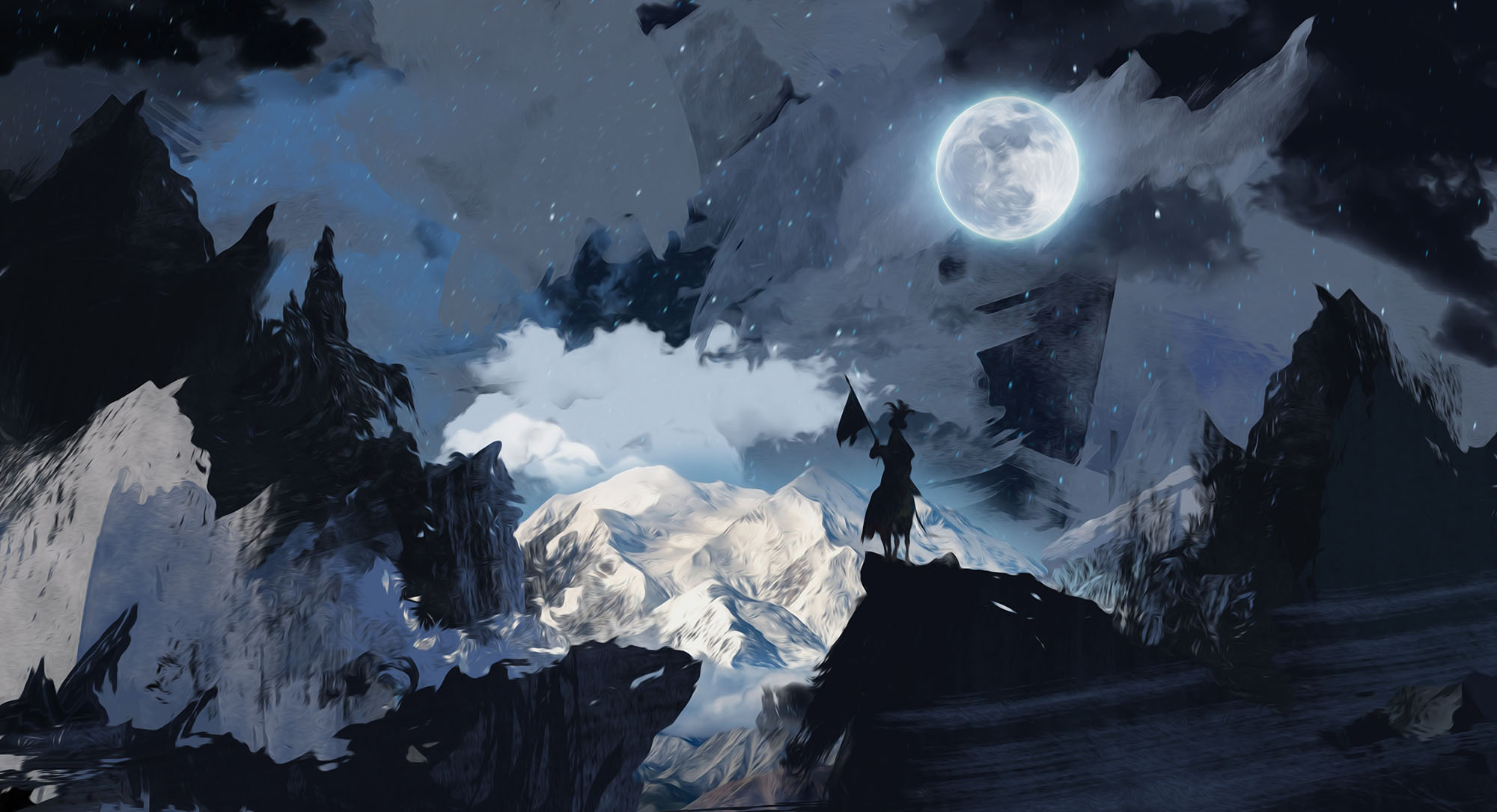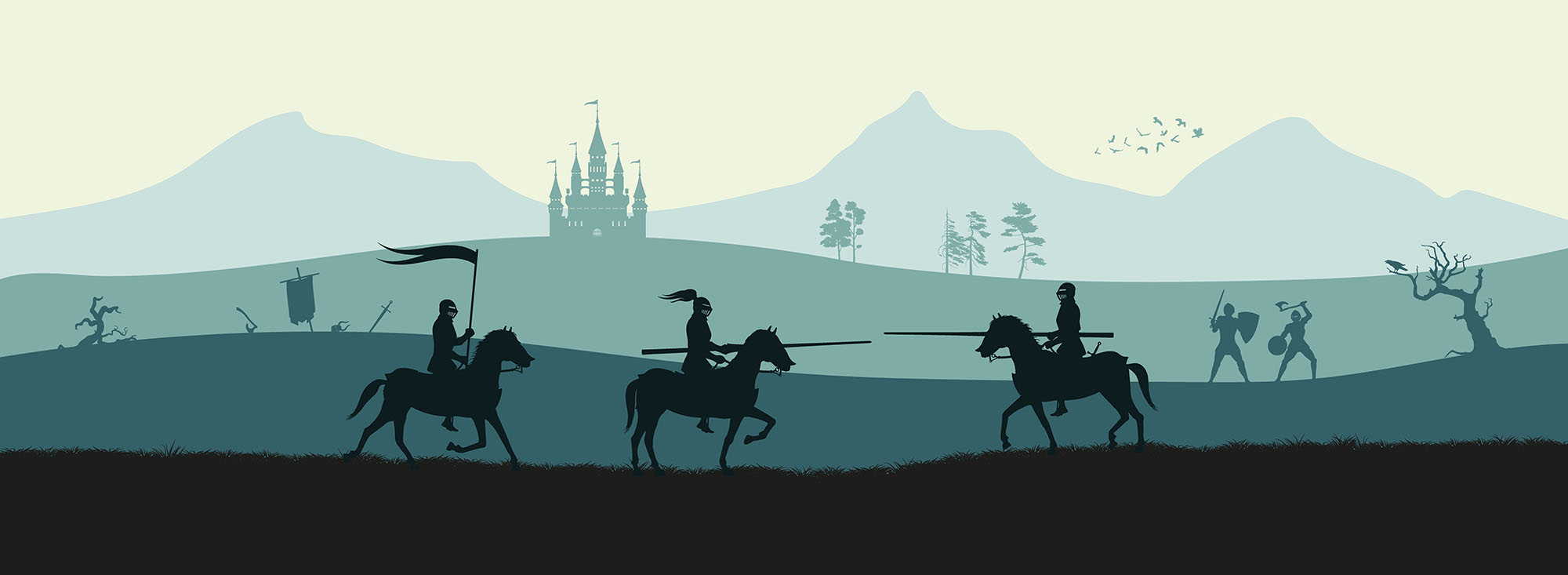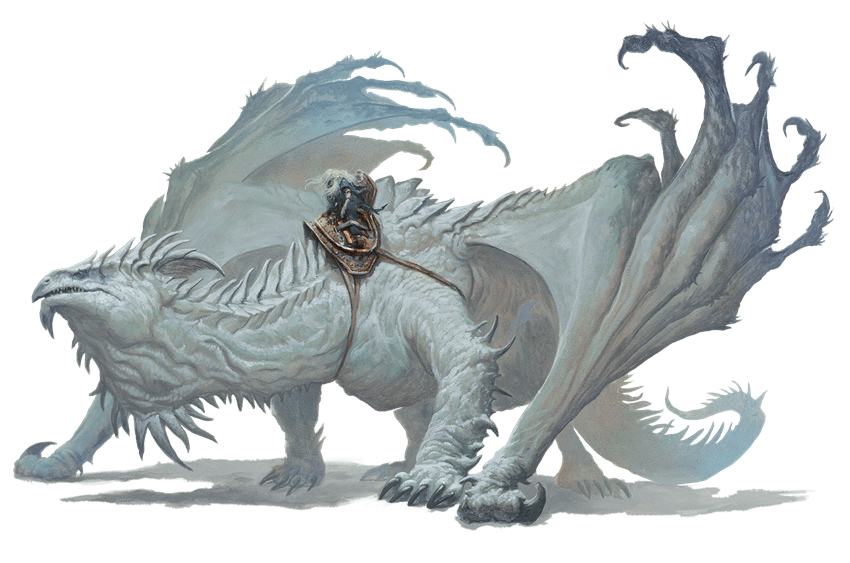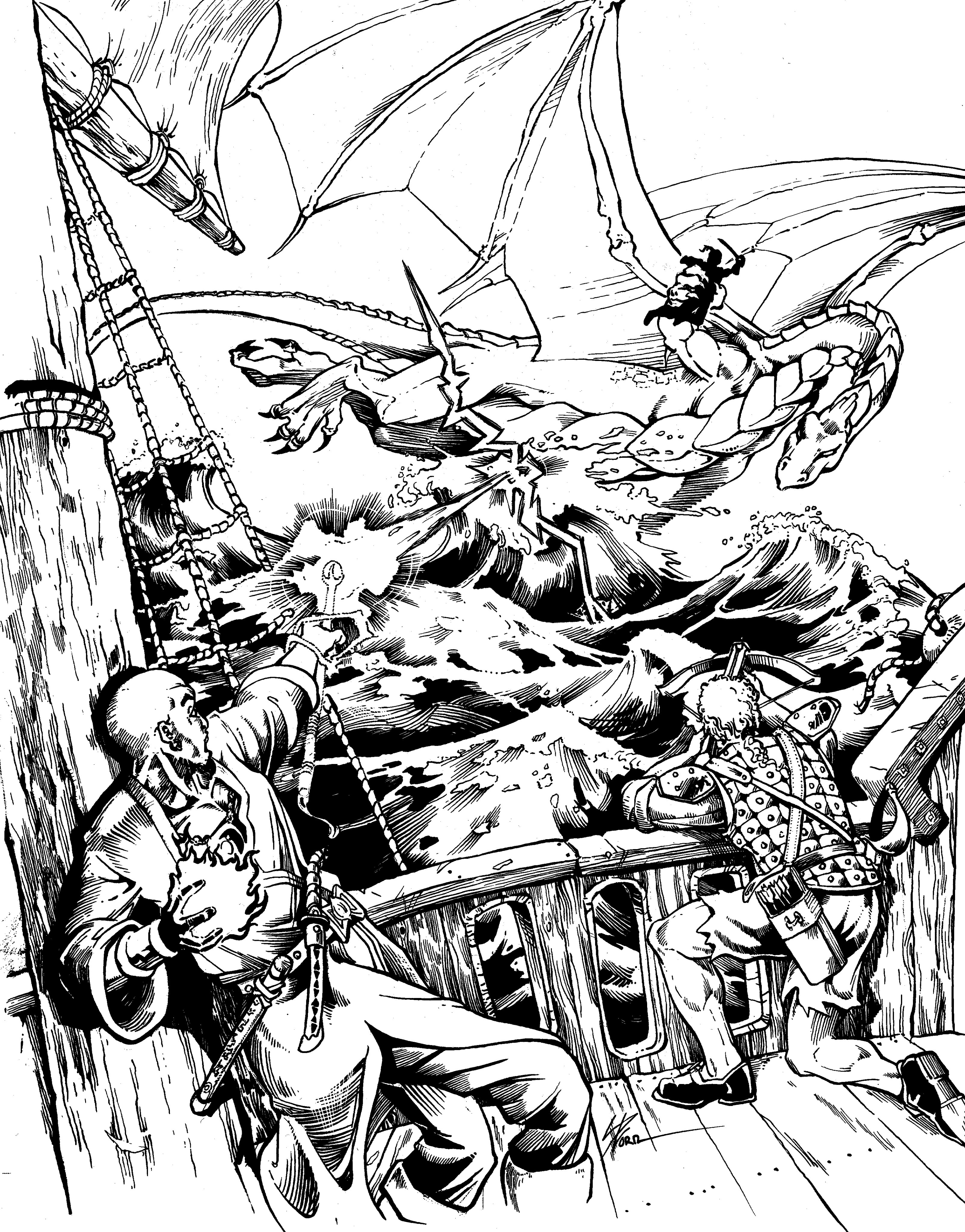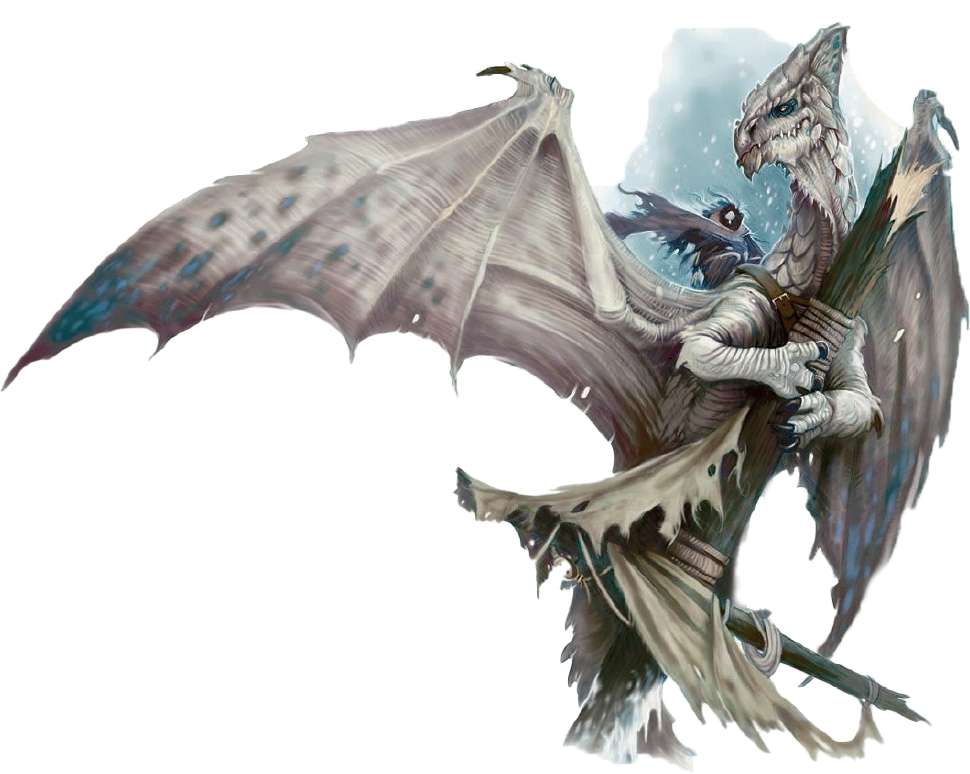Fantasy is, of course, the realm of the fantastic. We infuse fantastical elements into our campaign settings in many different ways – characters, spells, artifacts, strange creatures, and so forth. Oddly, however, I find that these fantastical elements often play out across mundane landscapes: They are the hills, fields, and forests of our own world.
What if, as we step into our fantasy worlds, we give ourselves permission to break these naturalistic conventions and created truly wondrous environments?
(New Zealand doesn’t count.)
Let’s start by looking at mountains.
The scope of a fantastical landscape is, of course, only bound by the limits of our imagination, so this will in no way be (or attempt to be) an encyclopedic treatment of every awe-inspiring peak. Instead, let this handful serve as a spark for your own inspiration.
CRYOVOLCANOES
Cryovolcanoes exist in our universe, just not on Earth. In environments of extreme cold, frozen volatiles like water, ammonia, or methane take on properties similar to solid rock, magma, and lava. Eruptions spew cryolava into the air, creating flows of ice-volcanic melt. After the eruption, the cryolava slurry — now exposed to the frigid surface temperatures — rapidly cools and solidifies.
Given that the conditions required for a cryovolcano to exist are generally considered antithetical to life as we know it, how could an icy volcano exist?
Let me suggest a connection to the Plane of Ice deep within a mountain peak. As the paraelemental material slips through the crack between planes, it would create pressure within the mountain, eventually triggering destructive eruptions.
Such cryovolcanoes might even be deliberately created by winter gods, frost giants, or white dragons to transform a region into one more hospitable to their interests.
THE EVER-BURNING PEAK

The other end of the spectrum, fantasy fiction is often studded with volcanic realms where Evil Overlords make their homes. Often one or more of these volcanoes will be in a state of constant eruption for dramatic effect.
Such volcanoes actually are possible in our world, although their true properties tend to be overlooked. Take Kīlauea, for example, a volcano in the Hawaiian Islands that has been erupting frequently for hundreds of years, including, notably, a single eruption that lasted from 1983 until 2018. It has featured long-term lava lakes, rivers of fire, and beaches of black sand.
However, while Kīlauea, like other volcanoes with long-term eruptions, can be incredibly destructive, it isn’t perpetually generating the cataclysmic imagery that we often associate with volcanic eruptions. (The long-term eruption, by its very nature, is relieving geologic pressure more slowly over a longer period of time, rather than dramatically and all at once.)
But if we did imagine a volcano that was in a perpetual state of cataclysmic eruption? The Heart of Evil. The forge of a dwarven god. An ancient, broken portal leading to the Elemental Plane of Fire.
(All of the above?)
The interesting thing to note here is not necessarily the volcano itself (although it’s undoubtedly very cool). Rather it’s the vast desert of ash which will inevitably rise up around the volcano.
Even a short eruption can create shocking amounts of ash, creating black dunes miles away from the volcano. Now imagine that same process occurring endlessly — day after day, week after week, year after year. Taken to extremes, we could imagine an Ebon Desert that would rival the Sahara, slowly creeping further and further out into the surrounding lands; swallowing entire civilizations over the course of centuries.
QUARTZ PEAK
Glittering in starlight and perhaps blinding in daylight, these peaks formed entirely from titanic quartz crystals — clear or purple or white or pink — are the gemstones of the gods.
- Alchemists believed that quartz crystals had healing properties and would use them in medicinal elixirs. Quartz spas on the mountain might have (or be believed to have) healing properties.
- The Egyptians believed quartz could prevent aging. Perhaps those who live near the quartz peak enjoy long life. (Legends might even claim that elves are actually the descendants of humans who lived within the mountain for many years. Elves, of course, likely find such tales offensive… unless it’s true and they protect the ancient, sealed dungeons of the mountain as an ancestral shrine.)
- Pre-colonial American cultures believed that quartz could balance the emotions. If the shape of the mountains is sufficiently changed by the miners seeking to extract the veins of rose quartz, what effect might it have on the local populace?
- In Ancient Japan, quartz was used for fortunetelling. On certain nights of the year (or more rarely upon the occasion of the celestial conjunction), could vast visions be glimpsed dancing within the mountain, providing hints at what the future will bring?
- Quartz was believed to be the imperial gemstone, which is why, when the mountain fell from the sky, the Divine Palace of the Emperor was carved from its peak.
Or maybe it just looks really, really awesome.
CLOUD GIANT DOCK
Atop this mountain the cloud giants built a dock for their floating citadels. Over time some of these citadels became permanently tethered; eventually dedicated platforms were added to the growing cluster, kind of like the artificial islands that are slowly expanding Tokyo.
The result is a mountain which appears to have a vast disc atop it, creating the impression of an unbalanced hour glass. (Or, if you prefer, perhaps the cloud giant structures are more of a mushroom-like tumor bulging out from the mountain’s peak.)
This aerial plateau could be an active community for the cloud giants. But perhaps these events happened centuries or even aeons ago, leaving only stone husks forming a strange dungeon in the sky.
RAINBOW MOUNTAINS

For a change of a pace, here’s a type of terrain which does exist on Earth: Rainbow mountains, which can be notably be found in the Vinicunca of Peru, the Zhangye National Geopark in China, and to perhaps less dramatic effect in other locations around the globe.
Rainbow mountains are the result of striated mineral bands, often resulting from layers of sandstone being deposited with different mineral content. Their colors in reality tend to be less vivid than you will often see in color-corrected photographs (including the one above), but they are nonetheless quite beautiful. (And there’s no reason your fantasy mountains can’t be as vibrant as you want them to be.)
As I brainstormed for this article, I had the thought that rainbow mountains could be a really cool idea, and only discovered that they actually existed (more or less) when I started googling them. There are undoubtedly people reading this who are thinking, “Well, duh. Of course rainbow mountains exist.” I include them here as a good reminder that our own world is vast and contains more vistas than we’ll ever see.
TITAN BURIAL MOUNDS
Giants are large. But in the elder days there were unimaginable colossi who strode across the world; their footsteps, it is said, were the size of kingdoms. They buried their dead in cairns the size of entire mountains. They stand out partly because they are often built far from any mountain range, towering peaks where none seem to belong; but mostly because they are clearly artificial in construction. You can see the individual, hewn stones that are the size of small towns stacked one atop the next.
Not all of the titan graves are simple mounds. In some cases, perhaps towards the end of their strange civilization, they built in more elaborate shapes — as if carving art to be seen from the stars above. An intermediary period saw the construction of a number of crescent-shaped mounds.
It’s a common bit of legend that some of the titans were buried alive within their mounds, and when they struggle against their bonds or stir in their sleep, they cause earthquakes.
Titans also apparently held the distinctive, pale blue of icebloom blossoms as their color mourning and would plant vast fields of them atop their cairns. In many cases, these blossoms — well-adapted to the thin, icy air — still cover the upper reaches of these “mountains.”
DREAM PEAKS
Mountains are the greatest of barriers, which also makes them powerful liminal spaces. Dream peaks exist in both this world and the world of the Dreaming.
This can take several forms (e.g., mountains that you climb up in one world and then descend in another; alps where strange visions appear in mist-drenched clefts; and so forth), but perhaps the most dramatic are those mountains which clearly shimmer with unreality from a distance: During the day they are semi-translucent, like the ghosts of mountains haunting the edge of the world. At night, dream peaks shift fully into our world… sometimes carrying strange things with them.

